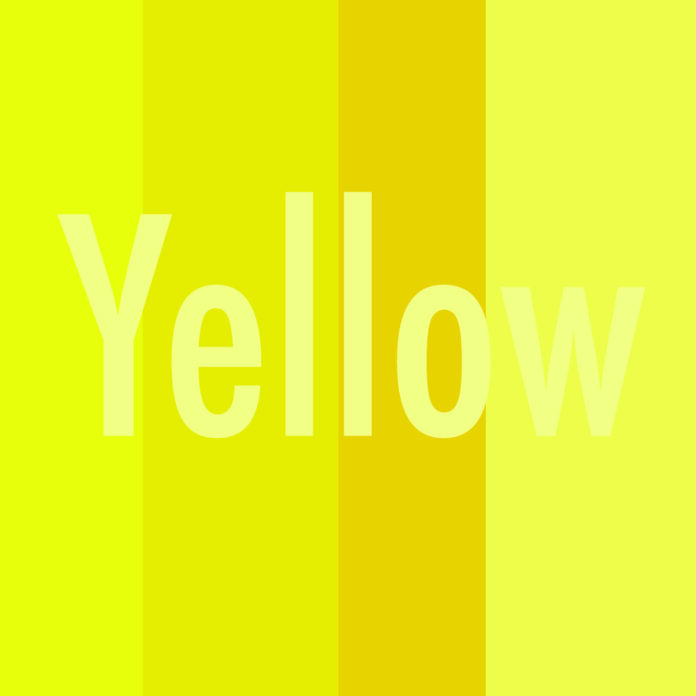Primary Color Yellow – A Dynamic Symphony of Simplicity and Harmony
Embracing Radiance: The Luminous Intrigue of Primary Color Yellow
In the vast canvas of artistic expression, the color yellow stands as a celestial marvel, radiating warmth and splendor like the midday sun. As an art critic, I find myself irresistibly drawn to the enchanting allure of this primary hue. Yellow, with its luminous brilliance, dares to evoke emotions that range from unbridled joy to profound contemplation, weaving a tapestry of fascination that transcends the boundaries of mere pigment.
Like a sunflower stretching towards the heavens, yellow captures the essence of optimism and hope. It imbues the artwork with an effervescent spirit, illuminating even the darkest corners of a composition with a celestial glow. Whether subtly woven into the background or boldly claiming the spotlight, this resplendent color possesses an uncanny ability to command attention, drawing the viewer into its embrace.
In the hands of a master artist, yellow becomes a veritable alchemist, capable of transforming the mundane into the extraordinary. It is the gentle brushstroke that imbues a landscape with the essence of a golden dawn, a luminous promise of new beginnings. It is the fiery streak that ignites the imagination, setting ablaze a canvas with creative fervor. Its versatility is unparalleled, seamlessly transitioning from the serene calm of a sun-kissed meadow to the electrifying intensity of a swirling sunburst.
Yet, yellow’s true magic lies in its emotional resonance. Like a beacon of happiness, it awakens memories of sunlit strolls and carefree laughter. It whispers of sunsets drenched in honeyed hues, igniting a sense of nostalgia and serenity. In its warmer shades, yellow symbolizes friendship, sparking the warmth of camaraderie within the hearts of those who behold it. In its cooler tones, it resonates with the intellectual realms, stimulating contemplation and sparking curiosity.
The masterful use of yellow evokes a delicate balance, for its brilliance can easily overwhelm when wielded carelessly. But in the hands of a skillful artist, yellow breathes life into a composition, creating a visual symphony that dances with light and shadows. It is a color that demands respect, never to be underestimated, for its vivacity can transform a canvas into a living, breathing entity.
Yellow, the ever-present companion of the sun, is a color that transcends cultures and time. Its allure has inspired the creative minds of artists throughout history, leaving an indelible mark on the annals of artistic achievements. From the ethereal glow of Van Gogh’s sunflowers to the mesmerizing radiance of Rothko’s abstracts, yellow weaves an enduring legacy of artistic brilliance.
The color yellow is an incandescent gem in the artist’s palette, a timeless beacon of radiance and hope. Its ability to stir the soul, evoke memories, and ignite the imagination is a testament to the power of color in the hands of a visionary artist. With each stroke, yellow embraces us with its luminous intrigue, inviting us to explore the vast spectrum of emotions it holds within its golden embrace.
Yellow is a vibrant and luminous hue that exudes a radiant energy and holds a special place in the world of art and color theory. As one of the three primary colors, along with red and blue, yellow plays a fundamental role in creating a diverse spectrum of colors and serves as a foundational element in artistic expression.
Emotional Impact:
Yellow is often associated with positivity, joy, and optimism. Its bright and cheerful nature evokes feelings of happiness, warmth, and energy. Yellow has the power to uplift the spirit and create a sense of optimism and hope.
Symbolism and Meanings:
Yellow carries various symbolic meanings across different cultures and contexts. It is frequently associated with the sun, representing light, life, and growth. Yellow is also linked to qualities like creativity, intellect, and enlightenment.
Psychological Effects:
Studies have shown that yellow can have psychological effects on individuals. It is believed to stimulate mental activity and boost feelings of happiness and energy. However, excessive exposure to yellow can be overwhelming and may lead to feelings of anxiety or agitation.
Complementary and Contrasting Colors:
In color theory, yellow is considered complementary to purple. When placed side by side, these colors create a striking contrast that enhances their individual impact. This complementary relationship is frequently used by artists to create dynamic and visually engaging compositions.
Variations and Tones:
Yellow offers a wide range of shades and tones, from the soft and delicate pastel yellows to the bold and intense shades of golden and sunflower yellow. Each variation of yellow carries its own unique mood and atmosphere, providing artists with a versatile palette to explore and express a wide range of emotions.
Cultural Significance:
Yellow has significant cultural and historical importance in various traditions and artistic styles. It has been used in art across different periods and cultures, from the golden halos in religious paintings to the use of yellow in Asian art, where it is associated with good fortune and prosperity.
Use in Art History:
Artists throughout history have harnessed the power of yellow to create expressive and evocative artworks. From the vibrant yellows used in the Impressionist paintings of Vincent van Gogh to the bold and symbolic use of yellow by artists like Wassily Kandinsky, yellow has been employed to convey a sense of energy, emotion, and luminosity in their works.
Yellow is a dynamic and emotive hue that holds both symbolic and psychological significance. Its ability to evoke feelings of joy, warmth, and optimism makes it a valuable tool in artistic expression. Whether used to depict the radiance of the sun, capture the essence of happiness, or add visual contrast to a composition, yellow continues to inspire artists and captivate viewers with its vibrant and luminous allure.













